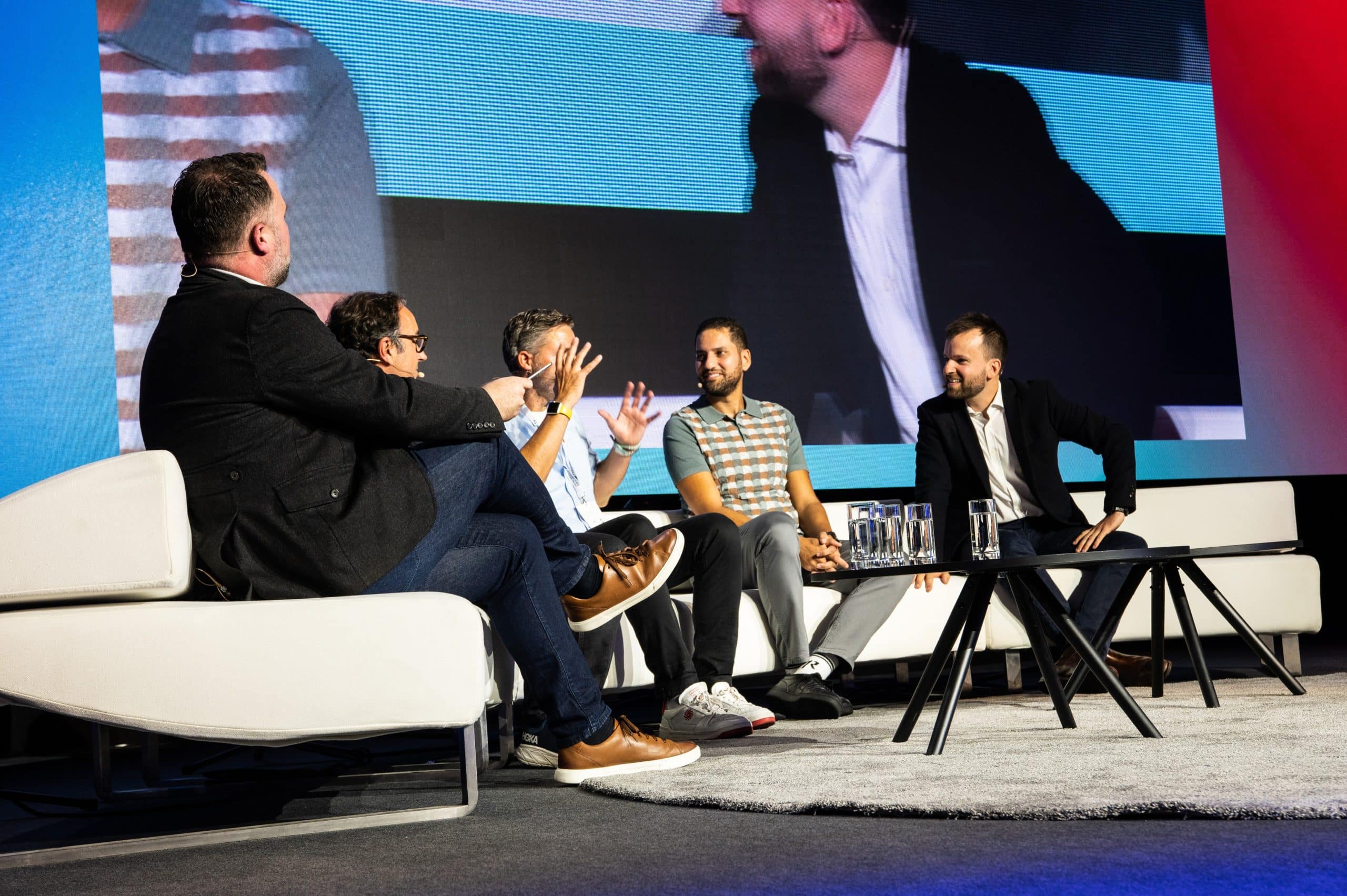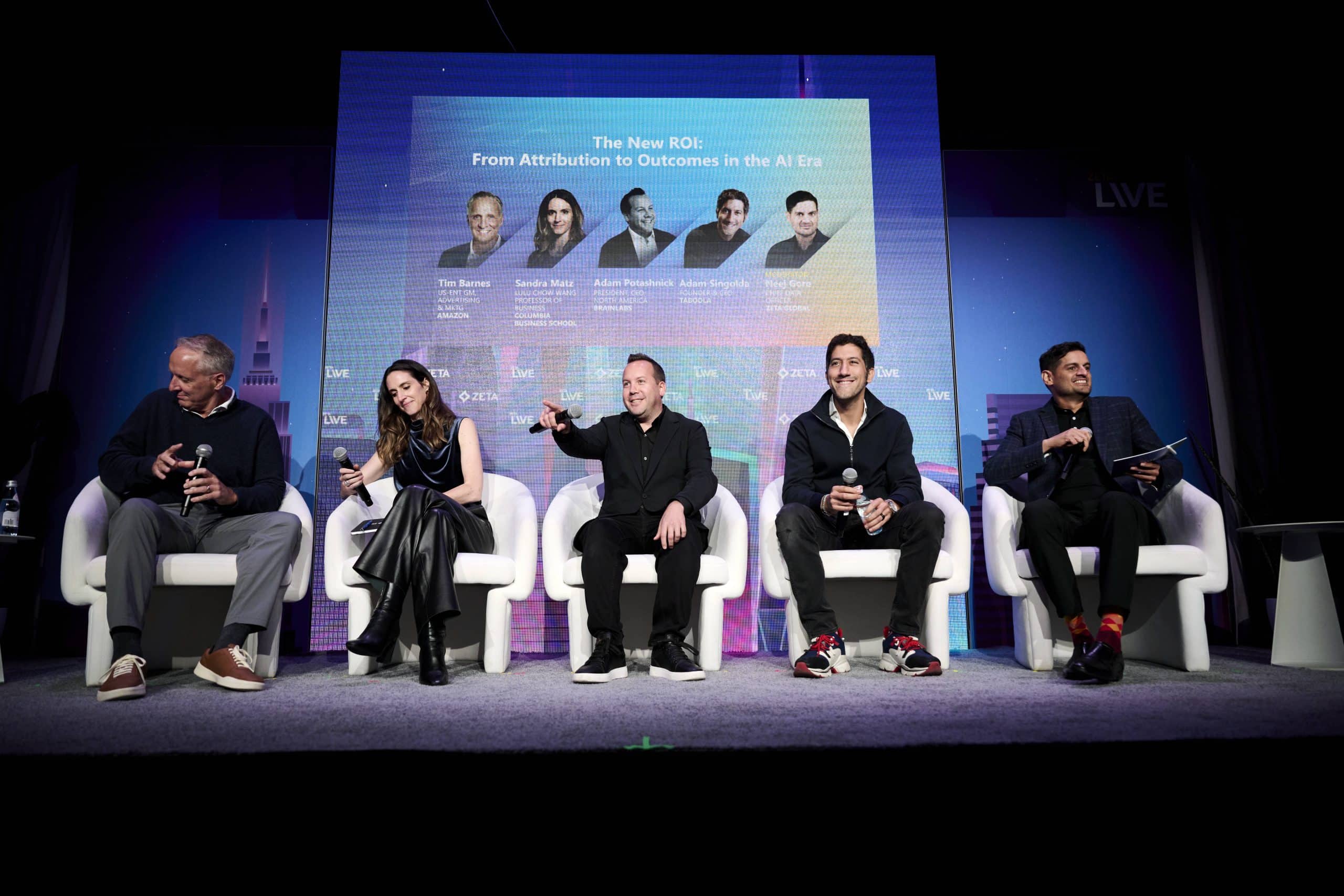Artificial intelligence and automation are reshaping digital advertising, offering the possibility of deeper personalization and more meaningful connections between brands and audiences. Yet the same technology can just as easily make those interactions feel impersonal or even intrusive. The challenge for advertisers today lies in using technology to scale and amplify human connection, rather than stifle it.
This was a central theme of Between Automation and Individualization: The Year in Adtech 2025, a panel discussion hosted at DMEXCO 2025. Moderated by Vincent Flood, Editor-in-Chief of VideoWeek, the session brought together Alexandre Fannius (VP EMEA, Taboola), Filippo Gramigna (co-CEO, Onetag), Khaled Alfangary (Senior Manager of Client Services, StackAdapt), and Andor Eggers (Head of Data Foundation & Adtech, MediaMarktSaturn).
In a packed 30 minute discussion, the panel explored how brands, agencies, and platforms are adapting to a cookieless, AI-accelerated world – and what it will take to build smarter, more responsible advertising in 2025 and beyond.
From Signal Loss to Value Creation
The conversation opened on the state of data privacy, a topic that still dominates boardrooms years after the cookie began to crumble.
The room didn’t need reminding that third-party identifiers are fading, but the numbers set the tone. As Gramigna put it, “the addressability around cookies is only 18%. It’s very small.” Marketers, he added, must blend new solutions and data signals to drive outcomes.
From a brand perspective, Eggers framed first-party data as both an asset and a responsibility: “Our loyalty members – it’s pure gold,” he said, though success depends on getting appropriate user consent and permission alignment.
Fannius pushed the conversation beyond compliance to strategic intent. After noting the room’s focus on consent, he added a second word: value. Once trust exists between a brand and its users, he argued, “the next question is: what is the true value of the targeting, and where does the media spend go? Is it the big platform, or is it funding journalists?” Marketers shouldn’t underestimate the power wielded by their advertising dollars, he warned.
Relevance Without Intrusion
With hard identifiers in retreat, the discussion moved on to contextual relevance – made smarter by AI, but grounded in common sense.
Alfangary was clear: “We’ve seen massive success around personalization, when we have the right contextual targeting around it,” citing a UK travel campaign that achieved 19x ROAS thanks to contextually relevant creatives and messaging.
From a retail perspective, Eggers offered a practical shorthand: “The easiest example we have is weather targeting. We run a promotion for air conditioning. If it’s in Hamburg and it’s 15 degrees and raining, that doesn’t make sense. It’s wasting money.”
At the same time, marketers must be careful not to cross the line between helpful and creepy. Alfangary reframed the principle behind effective targeting and personalization: “When I say the right time, it’s actually the right mindset,” he explained. “I may not actually click instantly, but the message will resonate.”
Automation With Intention
As the discussion turned to the power of automation, the panel agreed that while AI can increase efficiency, it must be used with care and purpose.
Gramigna cautioned that “AI is too powerful for us to take advantage of without having some education and some control over it.” Comparing responsible AI deployment to the way medicines are tested before being released, he added, “we are not in the right setup when it comes to AI yet.”
Alfangary described the technology as a tool rather than a substitute for human thinking: “The tech is there to support you, but the marketer is the orchestrator.”
For Fannius, automation shouldn’t be treated as an on/off switch. “I think it’s a spectrum,” he said. “If you’re an SMB brand, you probably want a creative box that will do a lot for you. If you’re a MediaMarkt, BMW or Mercedes and you have much bigger internal resources, you want to be at the steering wheel with the AI to help you.” The right systems, he argued, “give you the flexibility to keep the control, or outsource it if you need to.”
Fighting Fragmentation
The group also tackled one of adtech’s most persistent challenges: fragmentation. Gramigna described DSPs and SSPs as “two platforms that speak different languages,” urging the industry to adopt a less siloed approach so that data can flow more freely between platforms, preventing waste and helping advertisers achieve better business results.
Fannius agreed, saying, “I’m so shocked sometimes to see the workflows, how complicated it sometimes is for the buyers. Things need to be easy. The content, the targeting, the products – everything needs to be unified.”
At MediaMarkStaturn, Eggers’s team is building systems to connect creative, performance, and measurement data more efficiently. “You need to have the right operating model behind it,” he said, to ensure every part of the process works together toward the same outcome.
Why The Open Web Still Matters
In closing, the panelists returned to the question of where advertising investment should flow, and why the open web continues to be critical.
For Gramigna, it’s a matter of trust. “Getting an independent measurement of the outcomes you want to reach is something the big platforms and walled gardens typically don’t provide”, he explained.
Fannius’s approach goes beyond business goals to ethics. “It’s the responsibility of brands to fund the next quality source of information. If you look at the open web, there are so many options.”
Eggers offered a final piece of advice for navigating AI’s rapid evolution: “Think about data, technology, and empathy,” he said. “AI is AI, but you need a portion of empathy to use it in the right way.”
A Smarter, More Responsible Future
As the conversation came to a close, one theme stood out clearly: the future of advertising won’t be defined by how much the industry adopts new technologies, but by how wisely it chooses to use it.
Automation, data, and AI are only as valuable as the intent behind them. As Fannius put it, the goal isn’t to automate everything. It’s to create opportunity, trust, and value across a more connected, more responsible open web.
Image Credit: Nick Harwart



